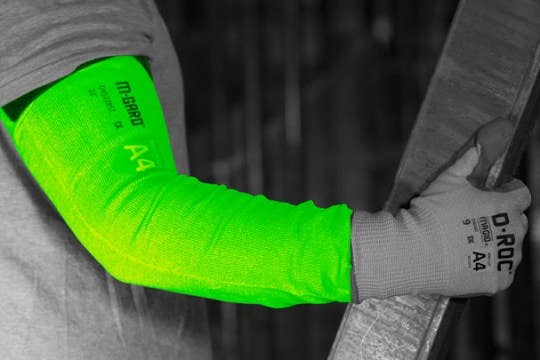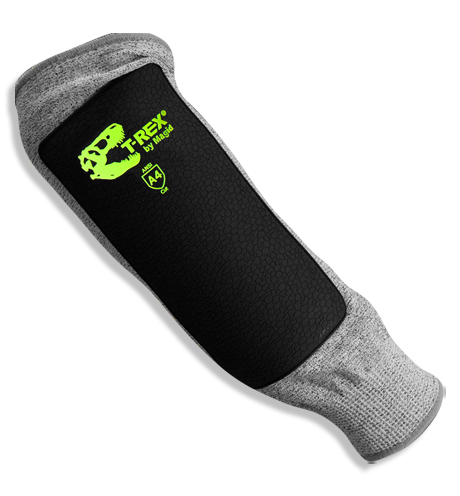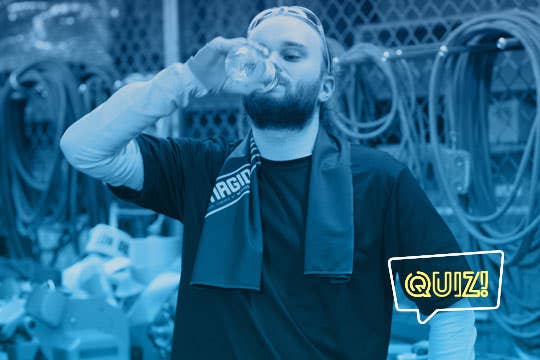
When Do You Need Protective Arm Sleeves?
By M.B. Sutherland, Sr. Safety Writer, Magid
Would you believe there were 84,810 arm injuries reported in 2021-22 according to the Bureau of Labor Statistics? It’s true! If you’re providing gloves to protect your workers’ hands from hazards like cuts, abrasions, punctures, burns, or chemical exposure, it’s likely that those same hazards pose a risk of injuring your workers’ arms.
JOBS THAT NEED PROTECTIVE SLEEVES
Hazards can be obvious in applications that work with sharp metal or chemicals. But it’s also important to evaluate the subtleties of what your workers do to find hazards. Taking a look at everything they do in their day can identify less obvious ways people can get hurt and where you need to protect them.
Arm Protection for Handling Large, Heavy Materials
Workers don’t just handle heavy materials with their hands. They often cradle items against their chest. Large materials can cause friction, scrapes or pinching on the arms. For these situations, give your workers a sleeve that has abrasion resistance in addition to strong cut protection.
Protective Sleeves for High Cut Hazards
Workers are at increased risk for cuts and abrasions on the arms when using sharp blades or handling materials with rough edges. Cut-resistant sleeves can give your workers the specific level of cut protection they need from their wrist to the top of their arm - some as high as ANSI Level A9.
Arm Protection for Manually Transporting Materials
Many safety managers only consider sleeves when workers are handling dangerous items like sharp edged metal, but it’s not always the product that justifies the need for a protective sleeve. It could be the environment or even the transition of the product from person to person. For example, if someone is handing a pipe up or down to another worker, the weight of the object against the arm can cause bruising or irritation. Sleeves with impact-absorbing pads can deflect and absorb blows from moving or falling objects. Carrying materials on uneven terrain can also cause injuries as workers shift items they’re carrying in their arms.
Protecting Arms When Reaching into Bins
Rough Edges
Sharp, uneven bin edges can cause hazards for workers reaching in with protected hands, but exposed arms.
Uneven Contents
When a worker pulls an item from inside a bin, it can cause the remaining items to lie awkwardly like a game of Pick-Up-Sticks. So the next worker may be injured by items unexpectedly sticking out. For these hazards, sleeves can give workers protection beyond their hands and protect against other hazards, as well.
Arm Protection for Reaching Over or Under Things
You know what your workers handle on the job, but have you considered all the movements they do? If workers have to reach over or under sharp, rough areas, it’s important to protect more than just their hands.
Sleeves to Prevent Exposure to Chemicals
Remember that sleeves aren’t just for protecting against cuts and impacts. If you use solvents or oils to clean parts, your workers may need sleeves to protect against chemical splash or residual exposure.
Note: Before bringing chemicals on site, check OSHA’s Safety Data Sheet to identify the best PPE for chemical hazards.
When Not to Use Protective Arm Sleeves
Keep in mind that sleeves are not appropriate for every job. Many regulations prohibit gloves, sleeves, or loose-fitting clothing when operating power rotating equipment. Depending on the job, the possibility of fabric getting caught in power tools may be too costly to take the risk. You should always consult both OSHA and company rules and guidelines before adding or subtracting any PPE on a job.
Evaluate where you need protective gloves and consider whether it makes sense to add sleeves. New sleeve materials and technologies not only reduce the risk of injury, but increase overall fit and comfort making it easier than ever to protect your workers beyond the wrist!
SIX ADVANCES IN PROTECTIVE ARM SLEEVES
Sleeve technology has made tremendous strides in recent years. Here are six new improvements in sleeves that you might have missed!
1 HIGH PERFORMING CUT-RESISTANT MATERIALS
Advances in sleeve materials are making sleeves stronger, cooler, and lighter weight than ever before. So single-ply sleeves can now give you all the protection of double-ply at half the weight, along with added features like flame resistance and moisture-wicking properties.
The newest innovations in engineered yarn are over 50% lighter than traditional HPPE of the same cut level, creating a cool, comfortable, ultra-lightweight sleeve that provides cut-resistance from ANSI Level A4, all the way up to A9.
Coreless cut protection uses non-irritating, strength-enhancing microparticles to achieve higher cut protection without the discomfort that fiberglass or steel can cause. This results in extreme comfort that’s cool-to-the-touch and 20% lighter than traditional HPPE of the same cut level.
Pound-for-pound, this premium cut-resistant technology is up to 15 times stronger than steel, yet it keeps your workers cool and comfortable and resists water, chemicals, and UV light better than similar sleeves made of para-aramid.
This material delivers up to twice the cut protection and two-and-a-half times the abrasion resistance of similar weight yarns made of 100% para-aramid with moisture-wicking comfort and flame resistance.
2 IMPACT-RESISTANT SLEEVES


Magid’s T-REX® TRXS12BS Hyperon® sleeves work just like impact gloves by positioning a thermoplastic rubber (TPR) impact-absorbing pad on the outside of the shell to deflect and absorb blows to the forearm, in addition to protecting against cuts. These impacts might come from heavy objects like a packed cardboard box or a steel roll that falls onto a worker’s arm while moving or reaching for products.
Underneath the T-REX’s M-Force Defense System is a 13-gauge Hyperon® cut-resistant shell that gives workers breathability and comfort. It is also the only ANSI Cut Level A4 impact sleeve on the market and offers 360-degree cut resistance. Hyperon® is more resistant to water, chemicals, and UV light than similar sleeves made of para-aramid. The shell’s blousy, single-ply construction gives the sleeve a comfortable fit that stays in place thanks to elastic at the wrist and bicep. So not only can new impact-resistant sleeves protect your workers’ forearms from bumps while manipulating heavy objects like plastic presses, or feeding objects into wood chippers, but your employees will feel comfortable wearing them.
3 CHOOSE YOUR OWN ADVENTURE
Now you can choose sleeves to match your unique environment and even individual worker needs with an incredible variety of options. Whether you’re looking for blousy or snug fit sleeves, hook and loop or elastic closures, sleeves with a thumb slot, sleeves that end at the wrist, longer sleeves, shorter sleeves, or even sleeves with impact protection – sleeve choices are more comfortable and varied than ever.
4 IMPROVEMENTS IN PPE STANDARDIZATION
If you don’t want the hassle of stocking multiple sleeve choices, you can pick a universal-fit, gusseted sleeve with a hook & loop closure. This one-sleeve option comfortably fits even very large or small workers and means you can buy in bulk, which can also save money.
5 REDUCED BULK UNDER GLOVES
A gap between glove and sleeve can leave workers vulnerable to injury. A common solution is a sleeve with a thumb slot to keep sleeves down and workers protected. But the overlap of sleeve material and glove material can leave an uncomfortably bulky wad of cloth at the palm. New sleeve designs provide both thinner material at the palm and a thumb slot that’s closer to the cuff so it’s easier and more comfortable to keep gloves on.
6 APPLICATION-SPECIFIC ARM PROTECTION
Manufacturers like Magid are getting creative and crafting custom arm protection solutions that are both tailored to your industry-specific needs and inspired by your workers’ feedback.
Multi-hazard Protection
Ensures that workers are protected from a multitude of hazards like cut and flame with just one sleeve.
Low-Linting Properties
Limit contamination and help protect the integrity of finished products.
Antimicrobial Properties
Inhibit the growth of bacteria on the sleeves themselves through the use of fabric treatments.
Hi-Viz Colors
Allow you to see that workers are wearing required PPE, especially in low-light environments. For food processing, sleeves also come in blue to help prevent contamination.
Check out the latest and greatest PPE innovations from Magid!



